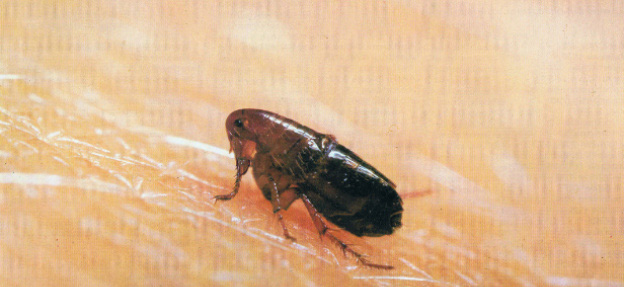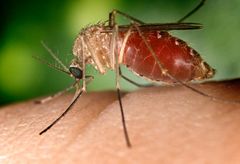ORDER: Heteroptera
FAMILY: Cimicidae
This biting insect was once a notorious pest in hotels, hostels and short stay accommodation premises, but now is becoming ever more common in homes. They are mainly a nocturnal insect, they are not of serious epidemiological importance. However, their bite is painful and leaves ugly red marks, the actual reaction depends on the victims sensitivity.
Size, Shape and Colour: The adult bed bug is 4-8mm in length, has a flat oval body which is covered with very fine hairs. Has no wings as such only very small buds. Bugs have a prognathous head which consists of compound eyes and a well developed antennae, with rostrum on its under side. Dark brown in colour, however after a blood feed will change to a reddish-purple shade.
Biology: During copulation the males inject the spermatozoa into a special pouch on the under side of the females body, from which they migrate to the ovaries via the body cavity. After sucking blood fertilized females lay 1-15 eggs in their day time retreats. The eggs are pearly white, 0.8-1.3mm in length, laid and secreted in hidden areas. If blood feeds are regularly available (every 3-4 days) they can go on laying for almost 6 months. The eggs hatch into nymphs after approximately 10 days, then will moult 5 times to reach adulthood, however a blood feed is essential before each moult. There is no larval stage to this insect which makes its life cycle (incomplete). From egg to adult 9-18 weeks, this is much dependant on temperature and food availability. In spring after low temperatures the females are infertile. If they have fed they can survive for upto a year without feeding and at low temperatures.
Preferred Foods: Bed bugs feeding preferences are obviously blood, also will switch host and feed on the blood of house pets and mice along with humans.
Habitat: During the day they hide in cracks, floorboards, beds or behind pictures, behind loose wallpaper, furniture, skirting boards. There is a vast number of areas where these insects retreat to. When disturbed, or lights are switched on they will scuttle back to some of the aforementioned areas. They are very hard to catch. The excreta marks look like a series of black marks often found on bedding and behind loose wallpaper, to name just a few areas.





